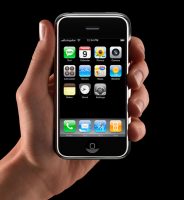The proposed Mobile Now Act signals that spectrum policy is being prioritized by Congress and there’s some useful reforms in the bill. However, the bill encourages unlicensed spectrum allocations in ways that I believe will create major problems down the road.
Congress and the FCC need to proceed much more carefully before allocating more unlicensed spectrum. The FCC’s 2008 decision, for instance, to allow unlicensed devices in the “TV white spaces” has been disappointing. As some economists recently noted, “[s]imply stated, the FCC’s TV white space policy to date has been a flop.” Unlicensed spectrum policy is also generating costly fights (see WiFi v. LTE-U, Bluetooth v. TLPS, LightSquared v. GPS) as device makers and carriers lobby about who gains regulatory protection and how to divide this valuable resource that the FCC parcels out for free.
The unlicensed spectrum provisions in the Mobile Now Act may force the FCC to referee innumerable fights over who has access to unlicensed spectrum. Section 18 of the Mobile Now bill encourages unlicensed spectrum. It says the FCC must
make available on an unlicensed basis radio frequency bands sufficient to meet demand for unlicensed wireless broadband operations if doing so is…reasonable…and…in the public interest.
Note that we have language about supply and demand here. But unlicensed spectrum is free to all users using an approved device (that is, nearly everyone in the US). Quantity demanded will always outstrip quantity supplied when a valuable asset (like spectrum or real estate) is handed out when price = 0. By removing a valuable asset from the price system, large allocation distortions are likely.
Any policy originating from Congress or the FCC to satisfy “demand” for unlicensed spectrum biases the agency towards parceling out an excessive amount of unlicensed spectrum.
The problems from unlicensed spectrum allocation could be mitigated if the FCC decided, as part of a “public interest” conclusion, to estimate the opportunity cost of any unlicensed spectrum allocated. That way, the government will have a rough idea of the market value of unlicensed spectrum being given away. There have been several auctions and there is an active secondary market for spectrum so estimates are achievable, and the UK has required the calculation of the opportunity cost of spectrum for over a decade.
With these estimates, it will be more difficult but still possible for the FCC to defend giving away spectrum for free. Economist Coleman Bazelon, for instance, estimates that the incremental value of a nationwide megahertz of licensed spectrum is more than 10x the equivalent unlicensed spectrum allocation. Significantly, unlike licensed spectrum, allocations of unlicensed bands are largely irreversible.
People can quibble with the estimates but it is unclear that unlicensed use is the best use of additional spectrum. In any case, hopefully the FCC will attempt to bring some economic rigor to public interest determinations.


 The Technology Liberation Front is the tech policy blog dedicated to keeping politicians' hands off the 'net and everything else related to technology.
The Technology Liberation Front is the tech policy blog dedicated to keeping politicians' hands off the 'net and everything else related to technology.